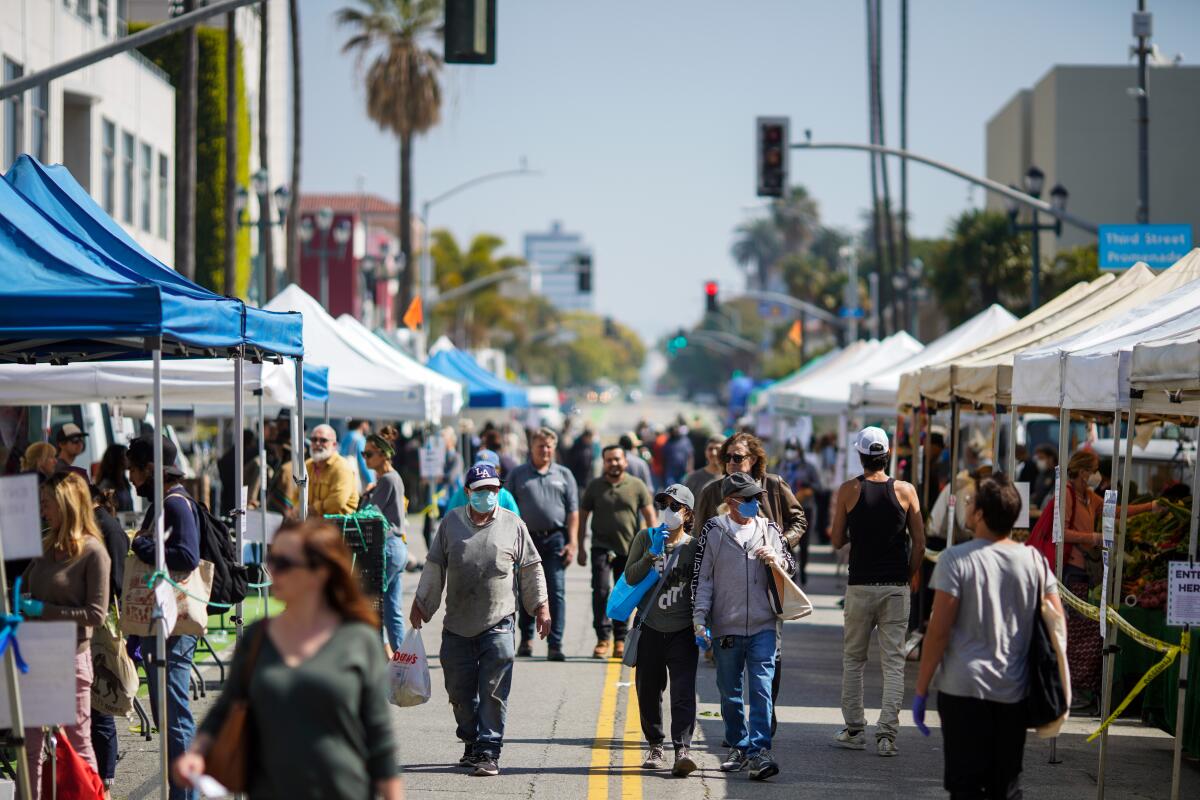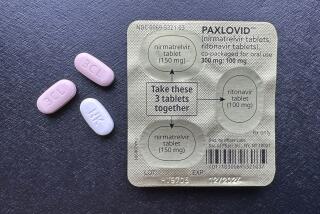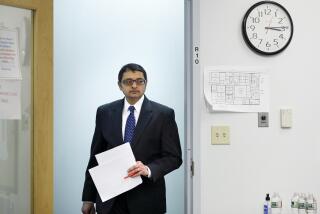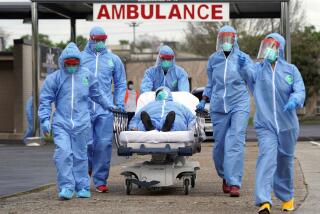Editorial: Can we still fight the coronavirus while holding the surveillance state at bay?

To slow the COVID-19 pandemic, countries around the world are entreating or even ordering residents to stay home as much as possible and keep a safe distance from one another. And to make sure the message gets through, they’re keeping a much closer eye than usual on where people go and what they do, often (as in China and Singapore) by monitoring data from smartphones and other location-sensitive devices.
The United States has yet to adopt the most aggressive of the surveillance-state tactics that other countries are deploying in the name of public health. But as the death toll mounts in the coming weeks, so will the pressure to follow the lead of countries that claim to have slowed the spread of the coronavirus significantly with the help of ambitious and intrusive monitoring.
In a crisis like the one we’re in now, the United States has to find the right balance between individual freedom and public health and safety. And most Americans would probably be happy to trade off some freedoms in the interest of curbing a disease that’s killing thousands. We would too, but with some strings attached: The sacrifices must be both temporary and necessary — and we’re not persuaded that some of the monitoring being done in the name of stopping COVID-19 is truly effective or necessary.
Many of us have already voluntarily ceded our 1st Amendment right to assemble in the name of social distancing, and for good reason. The novel coronavirus transmits from person to person with unusual efficiency, and we’ve seen the devastating results among people gathering on cruises, in nursing homes or even at choir practice. That’s why roughly 40 states as of Thursday had adopted some version of California’s stay-at-home rules to try to slow the spread of COVID-19 by keeping people apart.
In the process, we’ve ceded an unprecedented amount of peacetime power to state and local officials to decide which activities are essential and thus can continue, and which ones are not. Vermont has even gone so far as to tell big-box retailers that they can’t sell any nonessential goods in their stores during the pandemic. That would be intolerable under normal circumstances, but strikes us as justified now.
These distancing efforts, however, are painful and costly, which helps explain why compliance has been uneven. Across the country, many individuals have continued to congregate blithely at parks and parties. Some businesses, such as Tesla and Hobby Lobby, flouted the shutdown orders by claiming risibly to be essential.
Hence the government’s interest in using tools to monitor the public’s movements as a way to enforce the new rules. Such monitoring can also help identify where the virus is quietly spreading, public health experts argue, so that we can contain infections and start restoring our lives and livelihoods.
The most visible of these efforts are the barriers erected by countries, and even some U.S. states, to limit the arrival of people from virus hotbeds. Yes, it’s disturbing and un-American to see troopers patrolling the borders of Texas, Rhode Island and Florida to intercept out-of-state travelers and order them into quarantine. But at least the public can see what’s being done, document when the restrictions are being applied unfairly and know when they end.
By contrast, the measures taken by numerous countries to use location data from cell phones in the fight against COVID-19 are often invisible and even undisclosed. That makes it hard, if not impossible, for the public to weigh the privacy trade-offs.
That’s why aides to Sen. Ron Wyden (D-Ore.) are investigating what kind of surveillance may be taking place in the United States and how effective experts believe it may be.
The Wall Street Journal reported last week that federal, state and local officials in the U.S. are using anonymized data collected from advertisements on mobile devices to measure the effectiveness of the current social distancing guidelines and mandates. The goal is to help estimate how many infections may develop and need treatment locally, as well as potentially to identify the businesses and sites that aren’t complying with the rules.
Using aggregated, anonymized data this way serves a valid public health purpose. Nevertheless, phone users would probably be shocked to learn that online ad companies were tracking their movements in the real world and sharing it with local authorities, and there is a risk that some of the data collected is unique enough to reveal the identities of the individuals involved. That’s why governments should reveal what tracking they’re doing and commit not to retain the data they use.
Meanwhile, some countries are trying to harness cellphone location data to track the movement of individual people who’ve tested positive for COVID-19 and to figure out whom they’ve contacted. But using a mobile phone’s signals to help enforce quarantine orders will be truly effective only if people don’t know they’re being monitored — otherwise, they could leave their phones behind when they leave home to avoid detection — or if they’re forced to offer proof repeatedly that they are complying, as in Poland.
And the data generated by mobile devices simply isn’t reliable enough to tell when someone who doesn’t have the virus has come into close contact with someone who does. Instead, these contact tracing efforts are likely to identify far too many people as being potentially infected, only pushing the demand for tests further past the supply.
The threat of COVID-19 may be great enough to justify certain infringements of civil liberties. And under the circumstances, the shortcomings of some monitoring technologies may not be serious enough to rule out trying them. But again, any effort to collect location data should be done publicly and transparently, with assurances that the data won’t be preserved or used for any other purpose. That’s especially true for personally identifiable location data, which is both sensitive and coveted by advertisers, data brokers and others seeking to monetize information about you.
How government responds to this pandemic will set a precedent for the pandemics that are almost certain to come in the future. That’s why it’s vital that the steps taken have a proven connection to public health, that the public know what data is being collected by whom and for what reason, and that the measures will come to a certain end.
More to Read
A cure for the common opinion
Get thought-provoking perspectives with our weekly newsletter.
You may occasionally receive promotional content from the Los Angeles Times.










